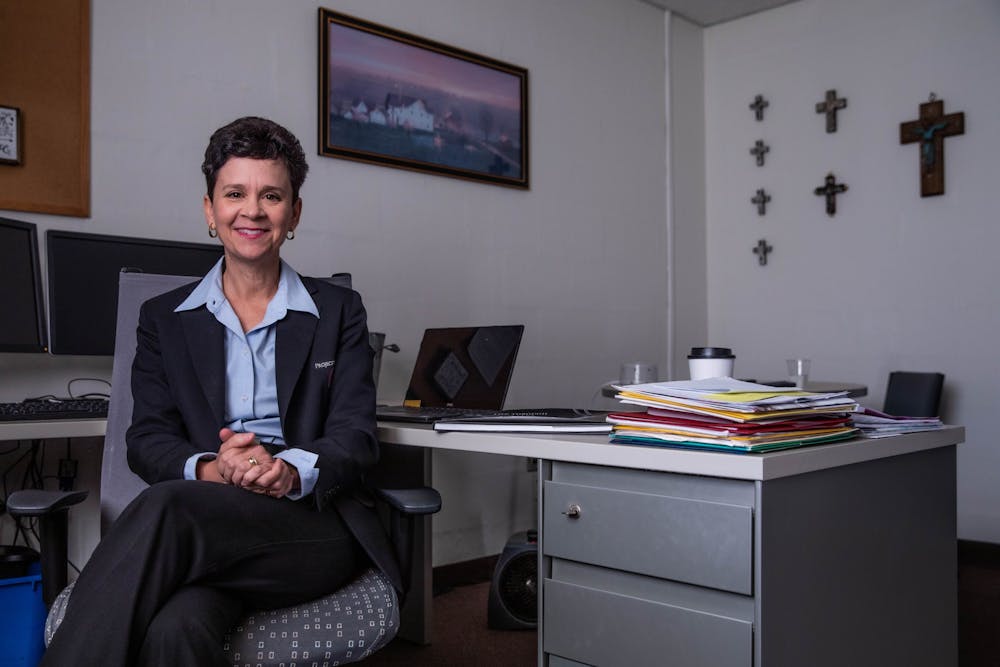An information session like none other is coming to Athens on Wednesday.
Life Through Their Lens is a panel and Q&A session about Amish culture. The talk, which will take place in Baker Center Ballroom, centers around the Life Through Their Lens: A Photo Collection by Amish and Mennonite Communities, Volume I photobook project conceived by Melissa Thomas, an Ohio University assistant professor of family medicine. The panelists will include Thomas, editor Margie Hiermer, Amish bishops Jake Beachy and David Kline from Holmes County and Life Through Their Lens photographer Talitha Tarro.
Thomas, who has worked with Amish societies from Ohio for 23 years, has mostly focused on servicing Amish societies with breast cancer outreach, but Life Through Their Lens was something new for her.
“The genesis of this project probably started around 2011,” Thomas said. “We started seeing this influx of docu-drama TV shows which really negatively impacted the way [Amish] communities were treated.”
Television shows like Amish Mafia or Breaking Amish negatively impacted the way Amish people were perceived by the masses, Thomas said. Life Through Their Lens was a way to flip mainstream narratives around.
“[The idea was that] what if we could take this camera — that's really been used as a weapon against the community — and use it as a window to their world,” Thomas said. “Where community members could have full ownership over the photos and the messages they wanted to share.”
For Thomas, the thought of photographing everyday Amish life wasn’t particularly easy to begin. The concept of a photo book about Amish culture was a novel idea that took special and concentrated efforts.
“It was really important to make sure this was community-led,” Thomas said.
The photographer took photos but the bishops ultimately decided which were to be used in the book. Life Through Their Lens was a partnership between researchers and culture, Thomas said.
The panel on Wednesday will provide a forum for students to learn about a culture that surrounds them, from first-person points of view.
“It provides the unique opportunity for students to learn more from community members themselves,” Thomas said. “[It’s] a chance to ask those questions directly to the community, to understand a culture that exists in half of the states in the U.S., and mostly in this rural Appalachia region where we live.”
For Thomas, learning truthfully about Amish culture is a way to combat negative stereotypes.
Thomas thinks this panel provides a great opportunity for those who want to educate themselves on cultures outside their own.
“I think there’s a really interesting lesson in intercultural communication,” Thomas said. “I think [for] anybody who has an interest in other cultures or communities, this is a really unique way to interact. It’s about that human connection.”
The discussion will make for a fun evening, Thomas added. The panelists are great speakers and have a good sense of humor.
Life Through Their Lens was a novel idea, Kelly Nottingham, a graduate student studying community-engaged research, said.
“Nothing was done without the community’s blessing,” Nottingham said. “It’s very mindful of the community. It was a 100% partnership.”
The book and the research surrounding the project is a template, Nottingham added.
To Nottingham, there is a lot of value in the Amish people who are creating their own stories and are willing to share their side of the process.
“It’s not what you see on TV,” Nottingham said. “People cook up something in their own heads and it’s what we don’t know — it’s the human side, in their own words. You get to see and hear from their own perspectives.”
Nottingham also thinks the panel is applicable to a wide variety of students’ interests and majors.
“It’s translatable across multiple areas,” Nottingham said. “Public health, nursing and medical students, business and marketing students, journalism and photographers — they can all learn something here.”
Margie Hiermer, editor for Life Through Their Lens, interviewed members of the society to get photo captions and to curate their story.
“My role was to record their words and give them back to them,” Hiermer said.
Hiermer transcribed quotes from her interviews, but the Amish bishops had the final say in what went into the book. The process was incredibly surprising and rewarding for her.
“I was often surprised but never disappointed at which words they chose,” Hiermer added.
Hiermer said the Amish were enthusiastic about the whole process. Parents of Amish children, who cannot speak English up until a certain age, even played interpreter during interviews.
For Hiermer, it was a life-changing learning experience.
“I think people can learn that we’re all more alike than we are different,” Hiermer said. “We learn more about our commonalities than our differences.”






